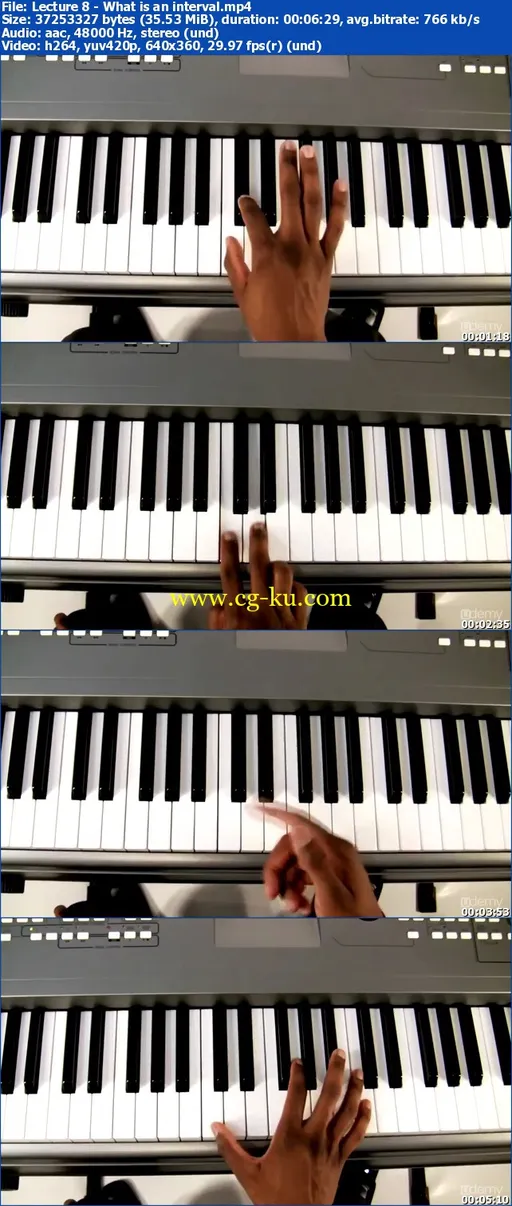
Udemy - Introduction to Piano Playing Master the Fundamentals
English | .MP4 | aac, 48000 Hz, stereo | h264, yuv420p, 640x360, 29.97 fps(r) | 3.19GBGenre: E-learning
Compose your own music with the fundamentals of scales, chords, and music theory.
Introduction to the Piano
Basic Theory, Melodic vs. Harmonic and Note Intervals
Common Scales, Both Major and Minor
Useful Chords and Triads
Transition to Chord Progressions
Why Learn How to Play Piano?
Music has been scientifically shown to induce pleasure in the brain. Learning the piano can tap into that subconscious yearning. Practicing an instrument stimulates memory, promotes coordination, induces relaxation, and creates learning patterns and techniques that can be transferred to other activities.
Pianos are also extremely versatile and can play most genres of music without need of accompaniment. Finally, since the piano is one of the most tonally precise but still-accessible instruments, playing the piano can form a bridge between other instruments or even studio production and pave the way for a hobby or even career as a musician.
Contents and Overview
This course is designed to be accessible for a complete beginner, but it also has lots to offer for moderately-experienced piano players. Enrollees should have access to a piano or keyboard with at least fifty-four keys/five full octaves. They should also have enough time for plenty of practice.
Each succinct lesson will teach you how to play by watching award-winning composer/pianist Ozie Cargile perform from a clear vantage point while you follow along.
You will begin by learning the basics of how to operate the piano and become acquainted with the keys. Once you've finished the principals, you will move on to learn and practice the most common scales, followed by chords, triads, and finally chord progressions.
You should then be able to practice composing your own music in any genre, style, or mode you choose and have fun while doing it.
Students completing the course will become intimately familiar with the basic workings of piano and music theory. They will also learn how to read chord charts and sheet music, and should be able to recognize most of the common chord progressions. There will even be some lessons for identifying notes and chords solely by ear.
Tickling the ivories can be both fun and rewarding, and by enrolling in this course, students will be able to create their own catchy tunes.
HomePage
